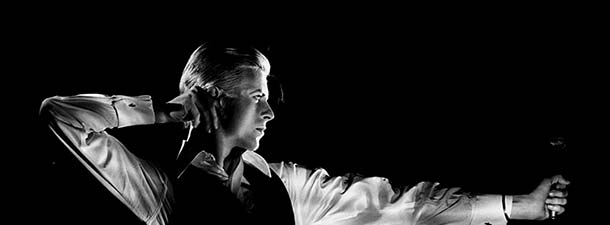
Gazpacho or Pizza?
Agosto 1, 2013
Leviathan 12
Ottobre 1, 2013Rock is looking back, in order to look forward. Bands are re-forming, sometimes after decades apart. As is perhaps appropriate, their music is getting more environmentally friendly. Mark Beech’s report pulls together the trends.
Curiously enough, it all fell into perspective when I met Adam Ant. The U.K. rocker was one of the biggest stars on the planet for a few years in the 1980s. He topped the charts while playing roles such as the Dandy Highwayman and Prince Charming. Then it all imploded. Now he’s staged a somewhat improbable comeback.
At the end of a television interview with me at his London, Chelsea home, Adam reclined on his chair. He’s now got a swashbuckling goatee and spectacles, like an intellectual, retired pirate. All the better to read the stacks of military history books scattered in his office.
Predictably, he said it was good to be back in the game.
“The actual making of the music is exactly the same,’’ he observed, “but the whole industry has completely changed in every aspect.’’
The young Stuart Goddard, as he was, never glanced at contracts. Now he enjoys reading them thoroughly. Record companies, radio, singles and video are nothing like they were, he noted. What matters most, then as now, is the quality of the music. The rest is secondary to that. “You got to know the past to look forward,” he added. That was the killer point.
We were talking about both Ant’s love of history and of those rock heroes whose pictures are plastered on his walls along with the gold discs, and also on record sleeves scattered among the books. His idols range from the mega famous, such as Elvis Presley, to the relatively obscure such as Vince Taylor, who gets a tribute song on his new album.
True, there’s nothing tremendously original about the thought that students of history can see the future more clearly. Even so, Adam was putting it in good context. I got the impression he’s more passionate about biography than some literary journalists and Oxford dons I know.
And he’s right. These last few months have seen the returns of so many stars that it’s easy to lose count. We were chatting about the welcome resurgence by David Bowie as well as Adam himself. But we could as much have been referring to another troubled 1980s star, Kevin Rowland, whose musical rebirth was every bit as dramatic.
Funnily enough, a few months before, I’d interviewed Rowland, who came to fame as the front man of Dexy’s Midnight Runners. I was similarly nervous with him. The volatile Rowland has variously hit and insulted reporters in his time. Adam’s own dark days had involved bipolar depression and a court appearance for threatening people with a gun. I wondered how much sense I’d get out of him for the camera. He was completely fine. Both stars have mellowed, if that’s the word, into articulate guys who can turn on the charm when needed – such as when wanting to push their records to a broadcast audience.
Rowland, in his turn, said comebacks would be the future. Well, yes, I knew he would say that about the first Dexy’s collection in 27 years. It helps that both Ant’s CD and that one have their moments, from their respective titles on: “Adam Ant Is the Blueblack Hussar in Marrying the Gunner’s Daughter” and “One Day I’m Going to Soar.”
Even more audacious was the return to form by Irish band My Bloody Valentine. The sound updates “Loveless” from some two decades before with just enough of a 2013 twist to keep it fresh.
On the reunion front, we’ve also been witnessing something that many thought we’d never get: another tour by the Rolling Stones. Ticket prices were sky high as the group milked its demand and fans speculate that “this may be the last time,” to quote the song title. I don’t know, but they aren’t getting any younger as they hit their 70s and they can’t carry on forever. I’ve heard more industry speculation than is fit to print on the problems of getting health liability insurance for Keith Richards. True or no, “Keef ” was on top form. I could only cheer as Jagger’s boys launched into the opener “I Wanna Be Your Man” at London’s O2. Most of the fans got satisfaction, even though that most famous number wasn’t played at the first show.
Those audience members watching the giant video screens saw plenty of wrinkles (sorry, Mick, I mean “laughter lines”). When I closed my eyes, the Stones were still as good as the dozen or so times I have heard them. Arguably, they are still the best rockers on the planet, half a century on and counting.
The mind boggles as to how the Beatles might have marked their 50th had they all still been around and actually speaking to one another. The Beach Boys managed to talk for long enough to make a new record and even play some Golden Anniversary shows together — again, with eyes closed, all that remains is the 1960s tunefulness which is still present and correct. The tour ended with less harmony after a war of words between Brian Wilson and the others.
All of these bands produced the cornerstones of rock, with plenty to inspire and teach acts getting ready for 2014. It was especially refreshing to see younger fans at both the Stones and Fleetwood Mac shows this year.
With ever more unequivocally dismissive comments coming from rival sides in Pink Floyd and the Smiths, it seems safe to assume no reunions are imminent there, though I’d be delighted to be proved wrong.
There were more optimistic noises coming from Led Zeppelin as it released Celebration Day, the CD and DVD record of its 2007 reunion. That’s probably the only O2 concert, out of hundreds I’ve heard, that can beat the Stones.
It was a couple of years back that another guitarist, Jon Squire, confided to me at the end of another television piece that the Stone Roses might get back together. Now of course they have, as has another British band of the same era, Blur. Fans were in tears at the quartet’s Hyde Park show at the prospect of this being the end.
Not all reunions are quite what they seem though. New Order went on the road with no Peter Hook; Suede recorded with no Bernard Butler; the Who performed without Keith Moon, the most manic drummer I’ve ever heard, who is doubtless doing that great gig in the sky with Led Zep’s John Bonham.
This makes comebacks by individual stars more plausible. I’m focusing on Dionne Warwick, Bobby Womack, Eric Clapton, Iggy Pop, Donald Fagen, Ry Cooder and Leonard Cohen, though arguably some had never been away. Or even Rod Stewart. The resurrection of singersongwriter Rodriguez after the film Searching for Sugar Man was miraculous.
A handful of concerts by the man once dubbed the Mexican Dylan were sadly a little less convincing. Still, the incessant resurrections have produced some amusing chart statistics. This year’s posthumous Jimi Hendrix album People, Hell and Angels debuted at number two on the Billboard chart; Black Sabbath’s 13 was the heavy metal act’s first number-one LP in its 40-year history.
On the “back to the future” theme, a lot of stars have referenced the past by re-recording their hits with an orchestra. Sting was one of the first with Symphonicities. The result is better than the Synchronicity pun. In another television interview, he told me that the orchestra was the biggest band he’d ever worked with and he was “like a kid with a new train set” in working with its musicians. Sting has been followed by Tori Amos, Kylie Minogue and George Michael, who all have made records with strings attached. Bowie’s comeback grabbed headlines around the world, because after a decade away nobody expected him to come out with a single on his 66th birthday.
“Where Are We Now” was a perfect example of reminiscences – in this case about his time in Berlin – being used to look forward. It was part of the aptly-named The Next Day which, when it came out, looked back even more self-consciously, right from its overprint of the 1977 Heroes sleeve. The Victoria & Albert museum exhibition devoted to Bowie has taken celebration of his legend to new heights.
The veteran stars aren’t as green as they were – if we talk about “green” as meaning innocence. (Yes, even Bowie looks innocent in those first few pictures of him in the V&A show.) But this time the music’s greener, if we are thinking of environmental concerns.
Even in the last few months, this has become all the more apparent. The demise of more record stores is making CDs and their packaging all the more uncommon. The retailing woe is a tragedy for long-time shop browsers like me, though I’m less worried about manufacturing waste – people don’t routinely throw out CDs as they would plastic milk bottles or whatever. Artists are nonetheless going greener with environmentally friendly cardboard sleeves.
The Knife is a cutting edge (pun intended) Swedish band which cares about the future of the planet. Its double LP “Shaking the Habitual,” as the title implies, is about changing habits. It gets political all too often, featuring possibly the only song to be inspired by oil extraction processes. “Fracking Fluid Injection” makes environmental pollution into an increasingly violent outcry. U.K. singer Laura Mvula’s “Green Garden” is sometimes said to be about the environment. I’m not so sure. It could just be a love ballad. The classicallytrained Mvula still is one of the best stars of today, harking after sounds of the past to make something new.
Daft Punk revives 1980s electronic music. The Yeah Yeah Yeahs also look back in places on Mosquito, with Karen O coming on like Siouxsie Sioux in punk’s heyday.
Lana Del Rey has revived torch songs from even earlier, such as “Blue Velvet.” Her retro music and that of Bryan Ferry stand as the most successful of everything on the Gatsby movie soundtrack, which tries hard to drag the story into the 21st century and often fails to convince. What comes around, comes around again for rock. Music of the future ultimately won’t be the dinosaurs of the past, or some of the second-timer veterans mentioned in this column. But it will be based on the musical lessons they lay down.
[note] Mark Beech is Bloomberg’s rock critic. A frequent commentator on U.K. TV, he is also the London-based Europe and Asian team leader for Muse, Bloomberg’s arts and culture section. His books include “The Dictionary of Rock & Pop Names” and he is a fellow of the Royal Society of Arts.
More information: mark@markbeech.net http://www.bloomberg.com/muse/mark-beech http://twitter.com/Mark_beech
[/note]




